Last Updated on June 28, 2024
The ’80s were an incredible time for horror, and during that decade we were introduced to two of the genre’s greatest icons, Freddy Krueger of the Nightmare on Elm Street franchise and Jason Voorhees of the Friday the 13th films. Those two gained a popularity that could rival that of the monsters and madmen Universal brought to the screen back in the Golden Age – and since Universal had their monsters cross paths on several occasions, it wasn’t long before fans started wondering what would happen if Freddy Krueger and Jason Voorhees were to come face-to-face as well. The mash-up of their two horror franchises, Freddy vs. Jason (watch it HERE), was inevitable, but the ’80s were long gone by the time the film reached the big screen, and it took nearly ten years of struggle to get it there, with screenwriters turning in draft after draft of scripts that were rejected and tossed aside. Getting two slashers to fight shouldn’t have been so complicated, so we have to ask: What the F*ck Happened to This Horror Movie?
When the idea of Freddy vs. Jason first came up, the characters were still at two different companies, Freddy at New Line Cinema and Jason at Paramount. Paramount executive Frank Mancuso Jr. tried to make it happen, though. He asked Jason Lives: Friday the 13th Part VI writer/director Tom McLoughlin if he would be interested in taking the helm of the crossover and approached New Line about the idea. The studios weren’t able to make a deal, so instead of pursuing McLoughlin’s back-up plan of Cheech and Chong Meet Jason – a crossover that, unfortunately, has never been made – Paramount moved forward with Friday the 13th Part VII: The New Blood, which pit Jason against a telekinetic teenager who was basically a stand-in for Stephen King’s Carrie.
After the 1989 release of Friday the 13th Part VIII: Jason Takes Manhattan, Paramount felt that they had run the series into the ground, so they allowed the original Friday the 13th‘s director-slash-producer Sean S. Cunningham to take Jason to a different studio. Cunningham, who had produced Elm Street creator Wes Craven’s film The Last House on the Left and even directed a bit of second unit on the original Elm Street, took Jason straight over to New Line. The first Jason movie to be distributed by New Line was 1993’s Jason Goes to Hell: The Final Friday, which Cunningham wanted to be different from the preceding sequels. Director Adam Marcus and the writers certainly delivered that, starting the movie with Jason getting blown to pieces. He then uses supernatural abilities that had never been hinted at before to start possessing people, not regaining his own form until the climax, just in time to get dragged to Hell by giant hands. The only thing left behind is his hockey mask. Even though Cunningham and the New Line executives were already thinking of Freddy vs. Jason from the moment they made their deal, Marcus thought he was just dropping in a fun sight gag when he had Freddy’s gloved hand come out of the ground to drag Jason’s mask down to Hell at the end of that film. Marcus didn’t know he was setting up the crossover, or how appropriate it was that he had Freddy welcome Jason to Hell, since the two were about to spend several years in development hell together.
For Freddy vs. Jason to receive a greenlight, Cunningham and New Line executive Michael De Luca would both have to approve a script, and finding one they could both agree upon was a grueling process. They listened to countless pitches, approached filmmakers like Peter Jackson and Guillermo del Toro, and hired more than fifteen different screenwriters to work on different iterations of the script. Some of those scripts are readily available on the internet, and others that aren’t available are well covered in Dustin McNeill’s book Slash of the Titans, which is highly recommended to anyone interested in the making of Freddy vs. Jason.
The first writer to take a shot at the concept was future Titanic cast member Lewis Abernathy, who had previously worked with Cunningham on a few other projects. Abernathy crafted a story in which a cult of Freddy-worshiping teenagers abduct a young girl with the intention of impregnating her with a soulless child. By inhabiting the body of the child, Freddy will be able to rule the world. The girl’s older sister figures out that her best chance to thwart Freddy and the cult is to resurrect Jason Voorhees and sic him on them. Abernathy had done some uncredited revisions on Jason Goes to Hell, and even wrote the film’s opening sequence, so he knew that the body Jason was taken to Hell in was a different one from the body that exploded at the beginning of the movie. The characters in his take on Freddy vs. Jason put that blown up body back together with fishing line and barbed wire, using steel braces to reinforce the arms and legs. There’s no doubt Jason would have looked pretty cool in this movie. Problem is, Jason’s missing a heart, since the Coroner ate it in Jason Goes to Hell – yeah, that movie’s a weird one. So the new heart that’s inserted into Jason’s chest comes from the heroine’s boyfriend, who was killed by Freddy.
Abernathy’s script was unusable primarily due to the tone. This script not only brought back the cartoonish humor of Freddy’s Dead, it went further with it. Freddy is constantly cracking jokes and even steals the “Smokin’!” line from The Mask, there’s a scene where a character interacts with a talking booger inside Freddy’s nose, and the big fight takes place in a boxing ring in Hell, with cameos by the likes of Ted Bundy and Hitler. But while this was very clearly not the script they should move forward with, it did establish several elements that other screenwriters would work into their drafts. Versions of the Freddy-worshipers – sometimes multiple people in a cult, sometimes just one fanatic – would be featured in drafts written by David J. Schow, Ethan Reiff and Cyrus Voris, David S. Goyer and James Dale Robinson, and Jonathan Aibel and Glenn Berger. Most of the scripts also had Jason being resurrected with the heart of the heroine’s boyfriend, with Jason’s heartless body usually being found at the bottom of Crystal Lake. Starting with Abernathy’s script, every rejected screenplay somehow made Freddy responsible for Jason drowning as a child. Abernathy wrote that Freddy was a camper at Camp Crystal Lake with Jason and drowned him because it was his idea of fun, in scripts by other writers Freddy was a camp counselor who had molested Jason and drowned him to cover up that crime. In a script written by Brannon Braga and Ronald D. Moore, Freddy drowns Jason just because the kid walked in on him having sex with Mrs. Voorhees.
Braga and Moore were hired for Freddy vs. Jason when they were fresh off of having Captains Kirk and Picard meet in Star Trek: Generations, so it seemed like they were the right scribes to turn to when you wanted iconic characters to collide. Rather than attempt to make a follow-up to the previous Elm Street and Friday movies, the duo took a meta approach along the lines of Wes Craven’s New Nightmare – in their story, the Friday the 13th films were based on the crimes of a real serial killer that we’d meet for the first time in this movie. The Jason envisioned by Braga/Moore is so grounded and human, he even gets captured by the authorities, locked up in jail, and put on trial. The heroine is his defense attorney, who realizes that Jason has a neurological disorder that keeps him from getting sleepy. When he’s sedated, he dreams of the man who drowned him – Freddy, who did not have movies made about him in this world – and his body serves as a doorway, through which Freddy can enter waking reality with his dream world powers intact. Freddy takes advantage of this and ends up causing mayhem at a shopping mall, which is also where the climactic battle takes place.
The Braga/Moore script was interesting and unique, but the way they re-imagined Jason begs the question – if the Freddy or Jason in Freddy vs. Jason weren’t the same characters fans had already come to know and love, why should the fans care about the crossover at all? The entire appeal of having the two clash is lost. This same issue came up again with other drafts, as the writers repeatedly attempted to go meta with the concept instead of scripting a match-up between the Freddy and Jason we had seen in previous movies.
In 1991, Peter Briggs wrote an Alien vs. Predator spec script that was purchased by 20th Century Fox, and since he had experience writing a crossover he was the next writer to get hired for Freddy vs. Jason. Briggs’ draft is the only full screenplay written for the project that actually brought back heroes and heroines from previous Freddy and Jason movies; specifically, he had the survivors of Jason Goes to Hell meet up with Alice Johnson, Freddy’s nemesis from Elm Streets 4 and 5, and her young son Jacob, the Dream Child himself. As fun as it would be to see characters from a Jason movie get menaced by Freddy and to see Alice face off with Jason, Briggs dropped these characters into an overblown, apocalyptic story that begins in 17th century Italy and is ultimately about a demon called Thanos (no, not the Marvel character) planning to take over the world in the year 2000, with Freddy and Jason basically just serving as his henchmen. Freddy isn’t featured enough in the script, while Jason is the one who is resurrected by cultists this time, emerging from Hell with a chrome mask reminiscent of the poster for Jason Goes to Hell. Journeys through the netherworld and even some time travel come into play by the time it’s all over, and Briggs reveals that Jason lived on Elm Street when he was a kid – which is why he became Freddy’s first victim after the child killer gained his dream powers. The Briggs draft became one of the most popular rejected scripts when Fangoria ran an interview with the writer in July of 1995. Briggs told them that New Line was hoping to get the film released in ’96, but fans actually had seven more years to wait beyond that.
The Crow screenwriter David J. Schow, who also worked with New Line on some Texas Chainsaw Massacre and Critters movies, did a direct rewrite of the Abernathy script, taking a more serious approach to the material than Abernathy had. Schow’s largest contribution to the development process was to make a character named Dominic the leader of the Freddy-worshiping cult, which Schow called the Fred-Heads. The executives really latched on to this Dominic guy and had him brought back as a human antagonist in several other scripts, including one by Tales from the Crypt: Demon Knight’s Ethan Reiff and Cyrus Voris.
Coming along just six months after the Schow draft, the script by Reiff and Voris was titled Freddy vs. Jason: Millennium Massacre, and it merged the basic ideas of the Abernathy script with the year 2000 apocalypse idea at the core of the Briggs script. A cult called the Fred-Heads, led by Dominic Necros, is trying to release Freddy from limbo so he can destroy the world. To protect her sister from the cult, a young woman resurrects Jason and sends him after Freddy, who raped and drowned him when he was a child. Reiff and Voris apparently pulled off the ‘Jason vs. Freddy and his cult’ idea better than other writers had, because their take on the material very nearly got a greenlight. With their script in place, New Line began searching for a director. The person they chose was special effects legend Rob Bottin, who is best known for the work he did on John Carpenter’s The Thing. Bottin would be making his directorial debut on this film, and planned to re-design the looks of both Freddy and Jason. He also came to the project with his own story ideas, convincing New Line to scrap the Reiff/Voris script.
Bottin wrote his a treatment that centered on a girl and her friends going to Camp Crystal Lake and tripping on a drug called Somnambulene that allows them to share each other’s dreams. While being stalked by Freddy fanatic Dominic Necros, they also hallucinate encounters with Freddy and Jason, who are just film characters in their reality. But somehow these film characters are also alive and capable of killing them, and of fighting each other. David S. Goyer, who worked with New Line on Dark City and the Blade trilogy, and would eventually write the icon mash-up Batman v. Superman, teamed with comic book writer James Dale Robinson on an unsuccessful attempt to turn the Bottin treatment into a sensible screenplay, and future Kung Fu Panda writers Jonathan Aibel and Glenn Berger also weren’t able to make it work. Bottin soon drifted away from the project, and The Mask and Timecop writer Mark Verheiden – who went on to be showrunner for the third season of Ash vs. Evil Dead – was hired to make one last attempt at turning Bottin’s treatment into a usable script. Verheiden tried to improve the idea by taking Dominic Necros out of the mix and removing the meta approach, setting the story in the continuity of the existing Elm Street and Friday movies. But his draft didn’t get the go-ahead, either.
Now Cunningham was getting restless, and he started to develop a Jason movie that he could make while waiting for Freddy vs. Jason to get off the ground. He gave New Line a deadline – if they didn’t have a script they could greenlight by a certain date, he was going into production on Jason X. Michael De Luca didn’t want that to happen, and tried to stop Jason X by asking The Cell writer Mark Protosevich to get a draft of Freddy vs. Jason ready in six weeks. Protosevich made the deadline, but there was no way his version of the crossover was ever going to be made. Entrenched in academia, the Protosevich draft centers on a grad student who inadvertently summons the title characters back into existence simply by putting together a presentation on them. The legendary killers then start terrorizing people around the student. It’s all surprisingly intellectual, and would have made for an extremely dull movie. The fact that Jason X exists shows that it didn’t go over well.
By the time Jason X was ready for release, there had been a major shake-up at New Line. The studio got new owners, many employees were let go, and lost in the shuffle was Michael De Luca. He was replaced by Toby Emmerich, who was open about not being a fan of horror, and Emmerich put I Know What You Did Last Summer producer Stokely Chaffin in charge of Freddy vs. Jason. Before De Luca left the company, he hired the writing duo of Damian Shannon and Mark J. Swift, who had no produced films to their credit, to write a new draft of Freddy vs. Jason. When Shannon and Swift turned in their script, Chaffin thought it was good enough to get the movie into production, and even though Cunningham had issues with the script, he signed off on it because he just wanted Freddy vs. Jason to get made already. Although the box office failure of Jason X made New Line a little hesitant about making another Jason movie at this point, they decided to move forward with it anyway. The search for a director ended with Ronny Yu, who had recently revitalized another popular slasher franchise with 1998’s Bride of Chucky. With Yu at the helm, Freddy vs. Jason finally went into production in September of 2002.
It would be easy to be cynical and speculate that the Shannon and Swift script wouldn’t have gotten the greenlight earlier in the development process, that the new executives at New Line just gave the okay to the first script that landed on their desks and Cunningham shrugged his shoulders about it. But even though things had changed by the time Shannon and Swift were done with their draft, they had also truly cracked the code on how to write a successful Freddy vs. Jason script. They didn’t overthink the concept, didn’t distract from the title characters by adding in other villains, didn’t try to re-imagine Freddy or Jason, and didn’t cheapen Jason’s mythology by saying that Freddy was responsible for drowning him. Their script isn’t set in a world where A Nightmare on Elm Street or Friday the 13th are movies that the characters have watched. Shannon and Swift’s Freddy vs. Jason is a follow-up to the existing films, picking up after the events of Freddy’s Dead and Jason Goes to Hell. Weakened not only by his defeat at the end of Freddy’s Dead but also by the measures taken by the authorities in Springwood, Ohio to ensure that he can’t infiltrate the dreams of any more Elm Street kids, Freddy has to search the bowels of Hell for someone he can send to Elm Street to kill some people and stir up fear. Jason proves to be the perfect candidate, and Freddy is able to manipulate him into going to Elm Street by appearing to him in the image of his beloved mother, similar to how Jason was fooled into thinking the heroine was his mother at the end of Friday the 13th Part 2. Jason’s dedication to his mother is so strong that he rises from Hell to follow her orders and go to Elm Street, where he kills someone in bed at an iconic location from the Nightmare movies, 1428 Elm. The police immediately jump to the conclusion that if someone died in bed in that house, Freddy has to be responsible. The fear generated among the locals by the murders Jason commits is enough that Freddy is able to start appearing in nightmares again; problem is, Jason sticks around in Springwood to go on a killing spree. He continues whittling down the population, stealing potential victims from Freddy. Now Freddy has to figure out how to stop Jason, and the teens realize they need Jason to fight back against the dream stalker. It’s simple, straightforward, and by far the best and most fitting story that had been written for Freddy vs. Jason in all those years of development.
Which isn’t to say that the finished film is perfect. Chaffin was concerned that Shannon and Swift’s script would result in a film that was too long, so she brought David S. Goyer back to the project to perform a rewrite. Goyer was able to streamline the script, but while doing so also made sure that the characters reiterate the plot to the audience over and over again through some very clunky dialogue. Apparently the producers were concerned that viewers wouldn’t be able to keep track of what was going on, despite how simple it is. While Yu brought a terrific visual style to the film and turned the fight between Freddy and Jason into a glorious bloodbath that lived up to all the anticipation, it has been claimed that he was more focused on the visuals and action than he was on the cast’s performances. Combined with the rewritten dialogue, that resulted in some awkward, laughable moments.
And then there’s the fact that Jason was recast. Kane Hodder had taken over the role in Friday the 13th Part VII: The New Blood, and when Part VIII: Jason Takes Manhattan was heading into production, no one thought to contact him. The movie was going to be shot in Vancouver, so Canadian stuntman Ken Kirzinger was hired to play Jason – until Hodder reached out to the producers and fought to be brought back. When he was re-hired, Hodder became the first person to ever play Jason twice. Then he reprised the role for Jason Goes to Hell, and again for Jason X. The entire time Freddy vs. Jason was in development, fans and Hodder himself assumed it was a given that he would be playing Jason in it, just as it was a given that Robert Englund would be playing Freddy again. Fans wanted to see Englund and Hodder fight each other. But they didn’t get to. There has never been a direct answer given for why Hodder wasn’t hired to play Jason. New Line execs said Yu had his own vision for Jason that required an actor with a different build, Yu has said the recasting was the studio’s decision. Whatever the case, Freddy vs. Jason was filmed in Vancouver, and Ken Kirzinger – who did a few stunts as Jason in Jason Takes Manhattan and also got tossed across a diner by Hodder in the movie – was again hired to play Jason. This time the casting stuck, and Kirzinger replaced Hodder more than a decade after he was originally supposed to. It wasn’t the Jason anyone expected to see in the movie, but there are some great things about Kirzinger’s Jason. He’s intimidating, he’s brutal, an unstoppable force… but Yu’s choice to make Jason move slower than ever before, with Kirzinger calling some his movements “painfully slow”, did result in a divisive representation of the character.
The Goyer rewrite and Yu’s direction also gave some viewers the mistaken impression that this movie says Jason is afraid of water, which every Friday fan knows isn’t the case. Shannon and Swift’s idea was that Freddy would be able to tap into the fear Jason felt as he was drowning when he was a child; Jason isn’t afraid of water, but he was scared when he was drowning. Freddy is able to use that against him – but in the movie, when Jason won’t strike at Freddy simply because there’s some water flowing between them, it does look like Jason is afraid of water, even though that wasn’t the intention.
Freddy vs. Jason definitely has its issues, and some of those have caused it to age poorly, but it’s still a lot of fun. Going ahead with the Shannon and Swift script, and hiring Yu to bring that script to life, paid off for New Line. The audience had been wanting to see Freddy fight Jason since the ‘80s, and when New Line gave them that fight they came out to watch it. All those years of development hell became worth it when Freddy vs. Jason was released in August of 2003 – ten years to the month after the release of Jason Goes to Hell – and earned over 116 million dollars at the global box office. Fans have debates over which of the characters won the fight, but this movie was a victory for everyone involved.
Some previous episodes of the series can be seen below, and more can be found on our JoBlo Horror Videos channel!


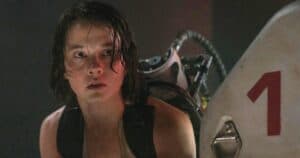



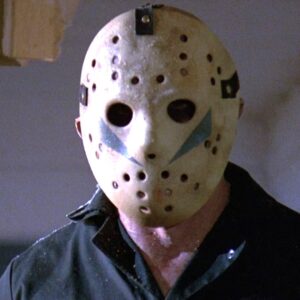
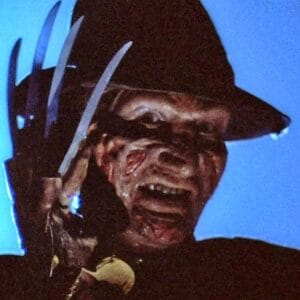
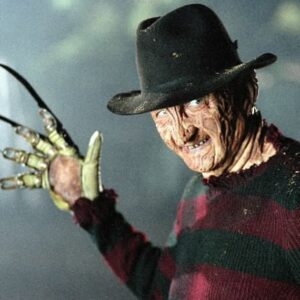
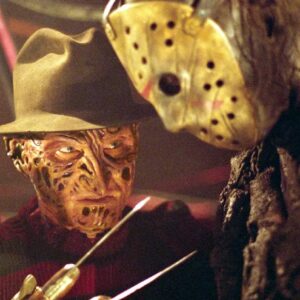
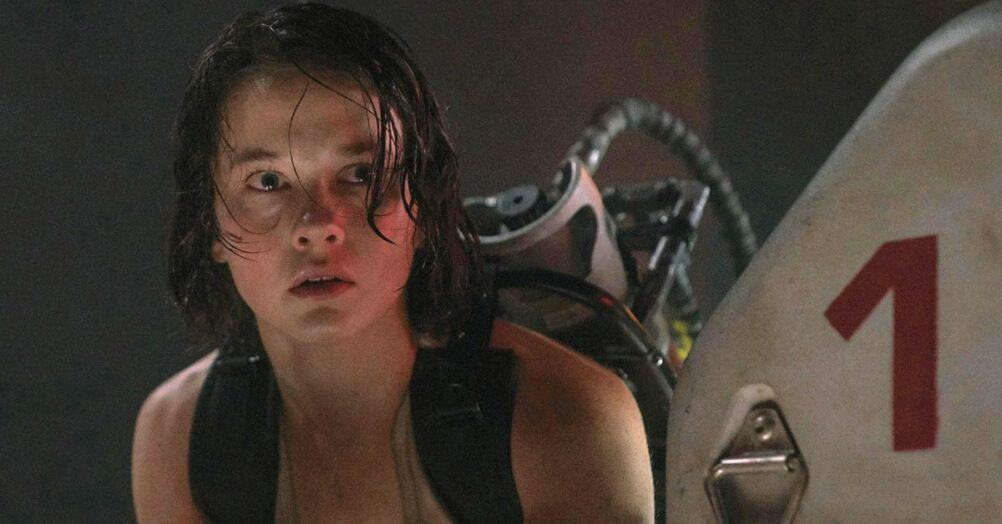


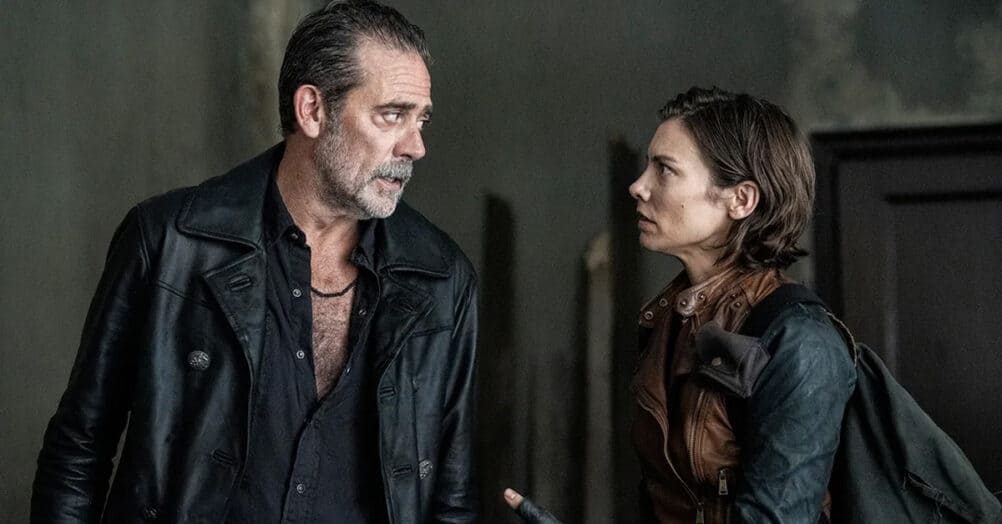
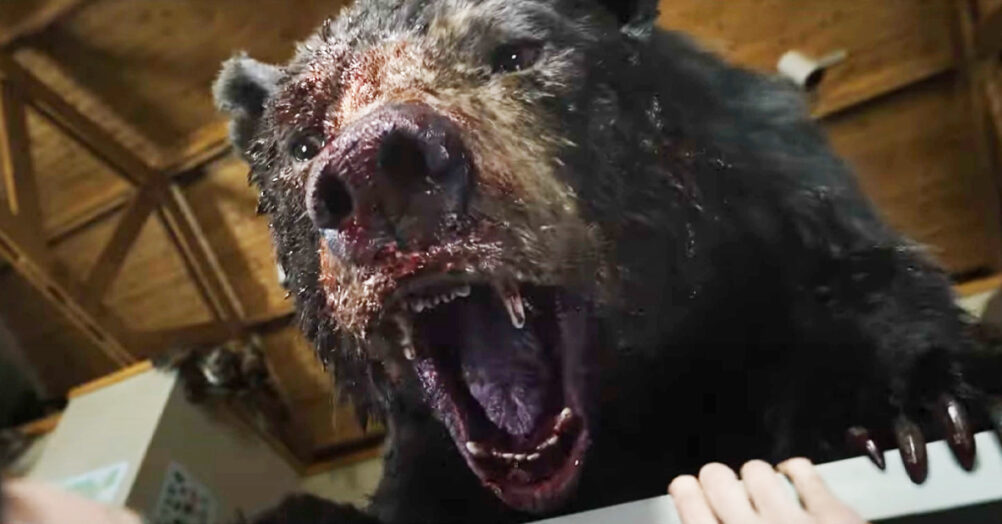

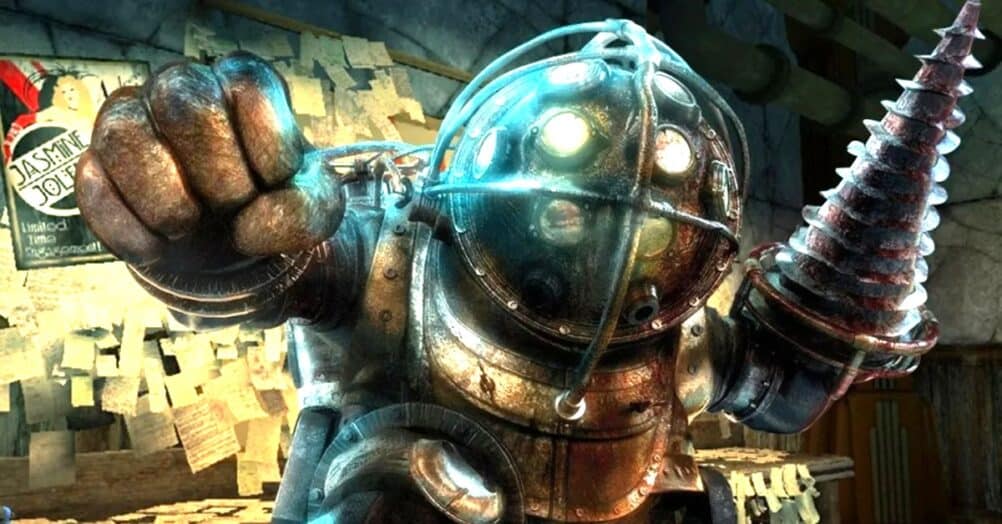
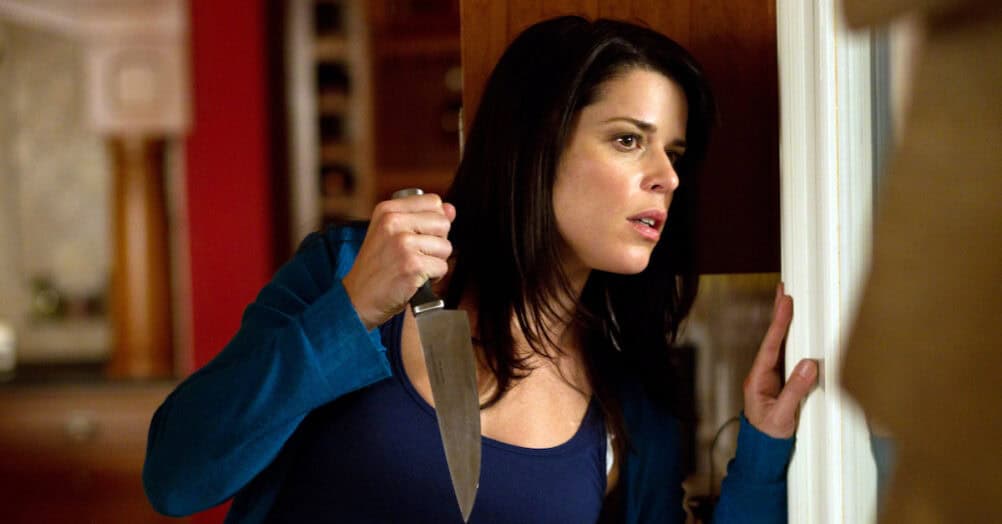


Follow the JOBLO MOVIE NETWORK
Follow us on YOUTUBE
Follow ARROW IN THE HEAD
Follow AITH on YOUTUBE